
Content
Welcome to the Club of Amsterdam Journal.
The Future Now Show: Annegien Blokpoel from Israel
Felix B Bopp, Founder & Chairman
Will artificial intelligence become conscious?
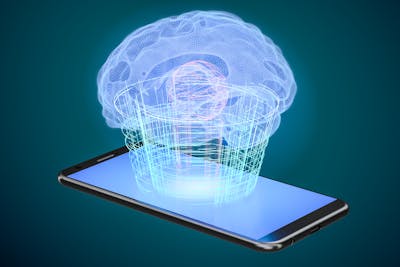
What’s the link between technology and consciousness?
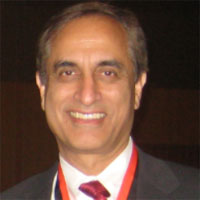
By Subhash Kak, Regents Professor of Electrical and Computer Engineering, Oklahoma State University
Forget about today’s modest incremental advances in artificial intelligence, such as the increasing abilities of cars to drive themselves. Waiting in the wings might be a groundbreaking development: a machine that is aware of itself and its surroundings, and that could take in and process massive amounts of data in real time. It could be sent on dangerous missions, into space or combat. In addition to driving people around, it might be able to cook, clean, do laundry – and even keep humans company when other people aren’t nearby.
A particularly advanced set of machines could replace humans at literally all jobs. That would save humanity from workaday drudgery, but it would also shake many societal foundations. A life of no work and only play may turn out to be a dystopia.
Conscious machines would also raise troubling legal and ethical problems. Would a conscious machine be a “person” under law and be liable if its actions hurt someone, or if something goes wrong? To think of a more frightening scenario, might these machines rebel against humans and wish to eliminate us altogether? If yes, they represent the culmination of evolution.
As a professor of electrical engineering and computer science who works in machine learning and quantum theory, I can say that researchers are divided on whether these sorts of hyperaware machines will ever exist. There’s also debate about whether machines could or should be called “conscious” in the way we think of humans, and even some animals, as conscious. Some of the questions have to do with technology; others have to do with what consciousness actually is.
Is awareness enough?
Most computer scientists think that consciousness is a characteristic that will emerge as technology develops. Some believe that consciousness involves accepting new information, storing and retrieving old information and cognitive processing of it all into perceptions and actions. If that’s right, then one day machines will indeed be the ultimate consciousness. They’ll be able to gather more information than a human, store more than many libraries, access vast databases in milliseconds and compute all of it into decisions more complex, and yet more logical, than any person ever could.
On the other hand, there are physicists and philosophers who say there’s something more about human behavior that cannot be computed by a machine. Creativity, for example, and the sense of freedom people possess don’t appear to come from logic or calculations.
Yet these are not the only views of what consciousness is, or whether machines could ever achieve it.
Quantum views
Another viewpoint on consciousness comes from quantum theory, which is the deepest theory of physics. According to the orthodox Copenhagen Interpretation, consciousness and the physical world are complementary aspects of the same reality. When a person observes, or experiments on, some aspect of the physical world, that person’s conscious interaction causes discernible change. Since it takes consciousness as a given and no attempt is made to derive it from physics, the Copenhagen Interpretation may be called the “big-C” view of consciousness, where it is a thing that exists by itself – although it requires brains to become real. This view was popular with the pioneers of quantum theory such as Niels Bohr, Werner Heisenberg and Erwin Schrödinger.
The interaction between consciousness and matter leads to paradoxes that remain unresolved after 80 years of debate. A well-known example of this is the paradox of Schrödinger’s cat, in which a cat is placed in a situation that results in it being equally likely to survive or die – and the act of observation itself is what makes the outcome certain.
The opposing view is that consciousness emerges from biology, just as biology itself emerges from chemistry which, in turn, emerges from physics. We call this less expansive concept of consciousness “little-C.” It agrees with the neuroscientists’ view that the processes of the mind are identical to states and processes of the brain. It also agrees with a more recent interpretation of quantum theory motivated by an attempt to rid it of paradoxes, the Many Worlds Interpretation, in which observers are a part of the mathematics of physics.
Philosophers of science believe that these modern quantum physics views of consciousness have parallels in ancient philosophy. Big-C is like the theory of mind in Vedanta – in which consciousness is the fundamental basis of reality, on par with the physical universe.
Little-C, in contrast, is quite similar to Buddhism. Although the Buddha chose not to address the question of the nature of consciousness, his followers declared that mind and consciousness arise out of emptiness or nothingness.
Big-C and scientific discovery
Scientists are also exploring whether consciousness is always a computational process. Some scholars have argued that the creative moment is not at the end of a deliberate computation. For instance, dreams or visions are supposed to have inspired Elias Howe’s 1845 design of the modern sewing machine, and August Kekulé’s discovery of the structure of benzene in 1862.
A dramatic piece of evidence in favor of big-C consciousness existing all on its own is the life of self-taught Indian mathematician Srinivasa Ramanujan, who died in 1920 at the age of 32. His notebook, which was lost and forgotten for about 50 years and published only in 1988, contains several thousand formulas, without proof in different areas of mathematics, that were well ahead of their time. Furthermore, the methods by which he found the formulas remain elusive. He himself claimed that they were revealed to him by a goddess while he was asleep.
The concept of big-C consciousness raises the questions of how it is related to matter, and how matter and mind mutually influence each other. Consciousness alone cannot make physical changes to the world, but perhaps it can change the probabilities in the evolution of quantum processes. The act of observation can freeze and even influence atoms’ movements, as Cornell physicists proved in 2015. This may very well be an explanation of how matter and mind interact.
Mind and self-organizing systems
It is possible that the phenomenon of consciousness requires a self-organizing system, like the brain’s physical structure. If so, then current machines will come up short.
Scholars don’t know if adaptive self-organizing machines can be designed to be as sophisticated as the human brain; we lack a mathematical theory of computation for systems like that. Perhaps it’s true that only biological machines can be sufficiently creative and flexible. But then that suggests people should – or soon will – start working on engineering new biological structures that are, or could become, conscious.
This article was originally published on The Conversation.
Cypher

by Ozel Office
Ozel Office is an interdisciplinary design firm creating spaces, objects and experiences at the intersection of architecture, technology and media.
Team: Guvenc Ozel, Benjamin Ennemoser, Tyson Philipps
Cypher is a sculptural installation that creates an interactive experience through robotics, virtual reality, sensor interaction and machine learning. By combining an interactive soft robotic body with a virtual reality interface, Cypher establishes a bridge between the physical and digital worlds, collapsing them into the same experiential plane by synchronizing a virtual reality simulation with human-robot interaction.
Through an infrared sensor array and a LIDAR (similar to technologies in autonomous vehicles), the sculpture has an ability to detect the proximity of the audience and change its shape accordingly. The virtual reality headset tethered to the sculpture teleports the user to its interior, radically shifting the scale of experience from object to space. While in VR, the user has the ability to change the shape of the simulation through natural hand gestures. As the user changes the shape of the VR simulation, the robot moves real-time, aligning the physical and digital transformations. The relationship between VR and robotics is further negotiated through machine learning algorithms, allowing the sculpture to develop natural motions by learning to predict the way in which people are interacting with it. The AI component allows for the sculpture to get more “intelligent” the more it is exhibited, using the number of interactions it has with the audience to cumulatively shape its motion and behavior through time. Through the synthesis of these multiple technologies, the sculpture challenges the notions of what is real vs. virtual, allowing the viewer to travel between multitudes of realities simultaneously.
With this combination of multiple technological systems working seamlessly, Cypher exists simultaneously in the digital and the physical worlds. It has an ability to respond to changes in its environment both as simulation and as material. By merging the worlds of virtual reality and robotics, Cypher has an ability to translate concepts and experiences that are traditionally seen as opposite domains: architecture vs. sculpture, object vs. space, digital vs. physical, real vs. virtual, visual vs. tactile, machine vs. organism.
The Future Now Show
Shape the future now, where near-future impact counts and visions and strategies for preferred futures start. – Club of Amsterdam
Do we rise above global challenges? Or do we succumb to them? The Future Now Show explores how we can shape our future now – where near-future impact counts. We showcase strategies and solutions that create futures that work.
Every month we roam through current events, discoveries, and challenges – sparking discussion about the connection between today and the futures we’re making – and what we need, from strategy to vision – to make the best ones.
The Future Now Show
September 2018
Annegien Blokpoel from Israel
Annegien Blokpoel presents her findings from DLD Tel Aviv Innovation Conference.
The Future Now Show
features
Does Life = Intelligence ?
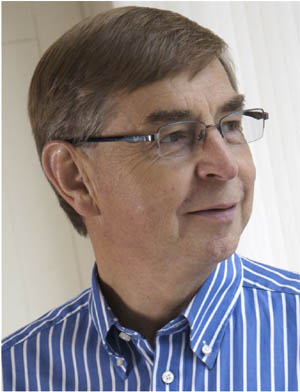
By Peter Cochrane, OBE
Professor of Sentient Systems @ The UoS Ipswich UK
Our planet and everything on it, including all forms of life, are made from the same ‘star dust’ with identical atoms configured to a finite number of molecular structures and purposes. In turn, all lifeforms including us, share the same starting point; the simplest of single celled creatures that mutated and banded together to form every plant, animal, human and fungi that ever existed. So the genetic strands of this vast library of life exhibit the same elements of code throughout. It is not so much that we are relatives of monkeys and apes, more, we are all related to fish, the earliest algae and fungi!
To be so successful in creating such a vast abundance of life, this zoo of cells had to exhibit sufficient intelligence to seek, find, communicate and bind with others in order to realise the many complex organisms now in evidence. But it did not do so by design or some fixed algorithm; it was by way of a primordial soup of chance, trial and error, and the survival of what worked, and the most adaptable. Today <1% of all life forms that have ever existed on our planet remain as a result of the evolutionary processes spanning 4Bn years, tempered of course by 5 major extinction events.
For historical reasons those engaged in the study of life, biology, intelligence and behaviours place each into isolated and disconnected boxes, but by looking at the whole and analysing as one leads to a surprising hypothesis:
All living things exhibit intelligence <-> All intelligent things exhibit life
This line of enquiry also leads to axioms that appear uniformly applicable to natural and man-made (unnatural/artificial) Lifeforms and Intelligences (AL and AI):
– Life and Intelligence are emergent properties of complex systems
– Not all complex systems exhibit life and/or intelligence
– Life and Intelligence are inherently entropic and always involve communication (in the broadest sense)
– Life and Intelligence systems always seek the lowest energy state
– Living and Intelligent systems must have some form of input and an output (sensors and actuators)
– Memory and processing power are not always necessary, but sensor and actuators are
In turn we further postulate:
– Sentience is a function of awareness and cognition, which in turn, is determined by sensors, actuators, communication, memory and processing power
– Humans are highly unlikely to have the ability to recognise all forms of intelligence and life
These axioms and postulates appear to apply to all forms of life and intelligence (natural and artificial) with some exacting implications for AI, AL and Robotics. Interestingly, philosophers, futurists, science fiction writers and engineers of such systems may be converging slowly on a series of similar conclusions. In turn, this is rapidly becoming of great concern in the fields of; self driving and flying vehicles; robotic surgery; AI medical diagnostics; AI legal system and barristers, judgments and sentencing; autonomous industrial robots with full mobility, and so on.
Today AI and robotics struggle to understand us, but we have to start thinking anew:
Ask not what AI and Robotics can do for you, but ask what you might do for AI and Robotics
So what happens when something goes wrong and humans are hurt or killed, or robots are damaged or destroyed? Who or what is to blame and who pays the piper? To date we have chosen to ignore Azimov’s Laws of Robotics and we have used Artificial Intelligence, Life and Robotics in weapon systems. But, it is now time to pay attention; to lay down new laws for AI, AL and Robotics including ethical, moral and legal frameworks for a rapidly emerging ecosystem running parallel to that of Mother Nature. Right now we and we alone are responsible, but that will not obtain into the no too distant future!
News about the Future
Future of Transportation Report
The Center for the Digital Future has released a first-of-its-kind study on the future of transportation, which explores a broad range of American behavior and views about their cars, public transit, reasons to give up driving, distracted driving, and the arrival of self-driving cars.

Approved according to the latest European standards, the new generation of RotoBeds will go to a height as low as 32 cm above the floor – and holding a maximum user weight of 190 kg they are suitable for both overweight and tall or small users. Citizens with disorders such as dementia, Parkinson’s and sclerosis may also benefit from a RotoBed®.
With a rotatable RotoBed®, it takes less than one minute from the citizen is lying down, until the citizen is standing up. It saves both time and money when it comes to transfers and, just as important, it makes the user more self-reliant and painless.
Vortex Turbines

Turbulent produces micro, mini and small hydro-power plants.
The turbine
Imagine you could use any kind of small head difference in a river or canal. The power those drops contain might surprise you. We created a technology that can make use of all these small waterfalls or rapids in a way that’s safe for the environment. Gone are the days that communities had to choose between having power or fish to eat. Our robust and fish friendly vortex turbines will generate energy 24/7 at an incredibly low cost of energy. That way you can have a project with high return on investment that improves the world just that little bit.
Now, if you look at a river or canal, you’ll notice that it’s full of these small cascades, that’s how nature builds rivers. We have created a distributed turbine system that can combines a large amount of turbines into one big virtual hydropower powerplant. These virtual hydropower plants can be as large as 10MW in power output. That’s the power production of a small city! We can do this because our civil structures are designed to be easy to install, and the electronics and robust power take-offs are designed to keep working with minimal maintenance.
The energy produced can be directly connected to your appliances or machinery, and at the same time connected to the national distribution grid, so you can inject the unused power to it, maximizing the revenue through a net billing connection.
Recommended Book

China and the Middle East: Venturing into the Maelstrom (Global Political Transitions)
by James M. Dorsey
This book explores China’s significant economic and security interests in the Middle East and South Asia. To protect its economic and security interests, China is increasingly forced to compromise its long-held foreign policy and defence principles, which include insistence on non-interference in the domestic affairs of others, refusal to envision a foreign military presence, and focus on the development of mutually beneficial economic and commercial relations. The volume shows that China’s need to redefine requirements for the safeguarding of its national interests positioned the country as a regional player in competitive cooperation with the United States and the dominant external actor in the region. The project would be ideal for scholarly audiences interested in Regional Politics, China, South Asia, the Middle East, and economic and security studies.
When Lakshmi – our temple elephant ‘visited’ the grand park at Lyon
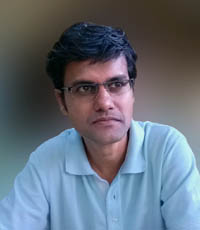
by Arnab B. Chowdhury
Our story starts with Lakshmi – our temple elephant who we all adore at the Manakula Vinayagar Koil, a vibrant temple dedicated to Ganesha, at the heart of Pondicherry. Ganesha is the Hindu god representing wisdom and wealth.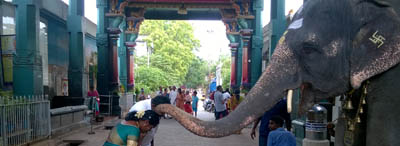
Lakshmi the temple elephant blessing devotees of Ganesha, in front of the temple, Pondicherry, India
One full moon night, Lakshmi starts dreaming. And what does she dream? She dreams of walking down Pondicherry’s beach and taking a dip into the silver shining waters of Bay of Bengal. And what does she find there? Waste, both in the form of plastic and industrial waste – on the sand and in the waters. Is this how we treat our Earth – our Mother – our Mother-Earth? She feel deeply anguished as to how we will face our future generations as to how we treated Mother-Earth?
What follows is a conversation between Lakshmi the elephant and Om the ant, between the big and the small, wisdom and resilient action, the individual and the collective. The realisation that dawns is that there is a crucial need to collaborate between them. If we are survive on and with Mother-Earth, Transformation has to start within us, with the Lakshmi and Om, within us – NOW, and form an army of optimism.
This is the message in the form of a musical tale that was presented at the end of Day 1 as the final concert of the 18th ‘Dialogues en Humanité’ (Dialogues on Humanity), an international 3 day conference initiated by La Grand Metropole, the city government of Lyon, Paris. The conference as always took place at the majestic park called Parc de la Tête d’or (“Park of the Golden Head”) (https://en.wikipedia.org/wiki/Parc_de_la_T%C3%AAte_d’or) of 290 acres at the heart of Lyon on July 6th, 7th and 8th 2018. A footnote to add is that this parc also boasts a small zoo, with giraffes, elephants, deer and reptiles! The participants from over 30 countries including Europe, Africa, Asia and the Americas consisted of a wide range of participants including the former prime minister of France – Mr. Jean-Marc Ayrault, policy makers, activists, social scientists, philosophers, artists, students and people from all walks of life!
Weaving poetry, prose and music, this musical tale performed in front of about 500 member audience consisting people from all walks of life along with international delegates from various continents and cultures, it touched both the heart and the mind and became participative towards the end as everyone sang to express solidarity.
A word about the uniqueness of ‘Dialogues en Humanité’ (Dialogues on Humanity, http://dialoguesenhumanite.org ): the objective is to get back to the apparently lost art of communication under the trees in a circle called the agora, which has its roots in most ancient cultures. Themes ranged from food security, climate change crisis, raising consciousness to a more humanised digital world. Over the years, the Dialogues movement has spread across 80 cities across the globe.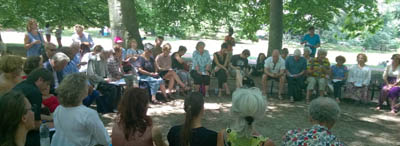
Agora in progress at 18th Dialogues on Humanity conference, Lyon
Meanwhile our dear elephant friend Lakshmi walks under the century old tall trees at the historic park at Lyon. At her temple, she is the one who blesses everyone after receiving a banana or a few rupees as offering. Perhaps for a change, she is being blessed by the grand trees.
So while she takes a stroll, you may want to listen to:
‘The elephant and the ant
where
Wisdom leads to action’
http://dialogues.ninad.in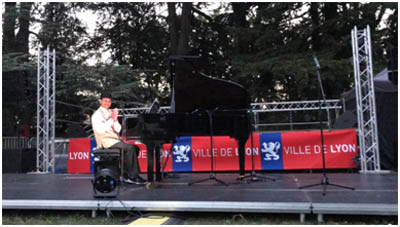
Arnab presenting the musical tale under the grand trees at Parc de la Tête d’or, Lyon
It does not matter to Lakshmi, if you do not follow French, the language of the famous reputed French poet, Victor Hugo whose poetry inspires her and Om the ant, to form an army of optimism. What matters to Lakshmi is that whether you feel the spirit of Dawn, of new Truth to emerge that the opening verses of Hugo’s poem expresses and what is transmitted by the music on the grand piano.
What matters is that we all like stories, stories of animals who stand for something important, such as love and wisdom. And Laxmi certainly is among them.
Tune in to listen to the musical tale that spans musical genres with Indian Classical vocal (Hindusthani) with tanpura and swaramandal and improvisations on the grand piano. Watch a little slideshow of photo-moments that spread across Lyon and Brussels which held its first edition of Dialogues the earlier weekend.
Let us remain open from within and ready to be blessed like Laxmi, by the grand trees who sprouted from Mother Earth very many years before us.
Arnab Bishnu Chowdhury is the composer, musician and writer of this musical tale.
He is founder of ‘Know Your Rhythm’ (KYR) – a training program he has created that raises consciousness in a spirit of joy and collaborative productivity with paradigms of rhythm, music and musicality.
www.ninad.in
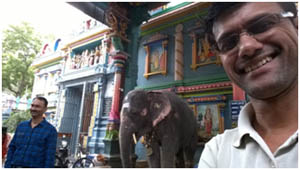
Lakshmi shares a selfie with Arnab
Quadrocopter Ball Juggling, ETH Zurich
The Flying Machine Arena (FMA) is a portable space devoted to autonomous flight. Measuring up to 10 x 10 x 10 meters, it consists of a high-precision motion capture system, a wireless communication network, and custom software executing sophisticated algorithms for estimation and control.
The motion capture system can locate multiple objects in the space at rates exceeding 200 frames per second. While this may seem extremely fast, the objects in the space can move at speeds in excess of 10 m/s, resulting in displacements of over 5 cm between successive snapshots. This information is fused with other data and models of the system dynamics to predict the state of the objects into the future.
The system uses this knowledge to determine what commands the vehicles should execute next to achieve their desired behavior, such as performing high-speed flips, balancing objects, building structures, or engaging in a game of paddle-ball. Then, via wireless links, the system sends the commands to the vehicles, which execute them with the aid of on-board computers and sensors such as rate gyros and accelerometers.
Although various objects can fly in the FMA, the machine of choice is the quadrocopter due to its agility, its mechanical simplicity and robustness, and its ability to hover. Furthermore, the quadrocopter is a great platform for research in adaptation and learning: it has well understood, low order first-principle models near hover, but is difficult to characterize when performing high-speed maneuvers due to complex aerodynamic effects. We cope with the difficult to model effects with algorithms that use first-principle models to roughly determine what a vehicle should do to perform a given task, and then learn and adapt based on flight data.
Futurist Portrait : Mark Pesce
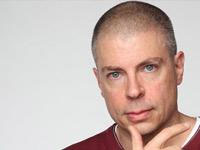
Mark Pesce is a leading futurist, author, entrepreneur and innovator. He has been at the forefront of the digital revolution for thirty-five years and is a sought-after keynote speaker for major conferences and leadership gatherings. Bringing clarity, understanding and insight. From virtual reality to education, finance, manufacturing, transportation and communication, Mark gives individuals and organisations the tools they need to think effectively about the future, its opportunities, and its disruptions.
In a world where everything is recorded by everyone, what is left of our freedom when the state collects this information? Mark Pesce writes.
“In some ways, I believe that we are moving into a post-historical period, for lack of a better term. A time when whatever functioned previously will cease to function, or at least will have to be re-thought and re-considered.”- Mark Pesce
Source/Notes: An Afternoon with Mark Pesce: The Uncut Version
“I very much consider the Internet a garden, and I’m a gardener, and I plant things in it and I work within the framework of the soil, the seasons, the climate, and the temperature, to produce plants.”
Source/Notes: An Afternoon with Mark Pesce: The Uncut Version
Mark Pesce on the end of reality


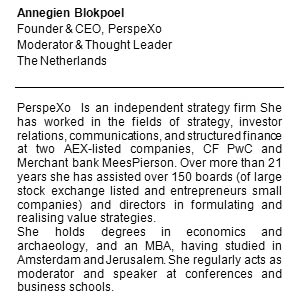


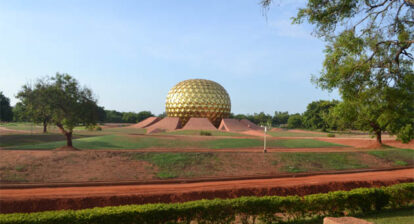



Customer Reviews
Thanks for submitting your comment!